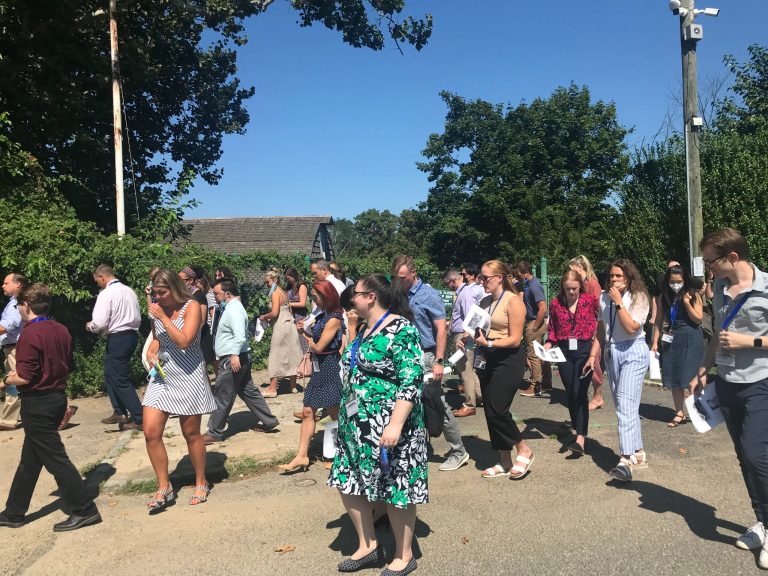
A pair of buses packed with around 40 of the Great Neck School District’s newest educators spent time touring some of the peninsula’s most historic landmarks and locations ranging from the Steppingstone Lighthouse to the U.S. Merchant Marine Academy.
Great Neck North High School Principal Dan Holtzman said the tour, conducted with the help of the Great Neck Historical Society, was previously part of the district’s orientation for new teachers but had not been done in recent years. Now, as the strains of the coronavirus pandemic have been significantly mitigated, Holtzman said he thought it was an appropriate time to reinstate it.
“The idea really was that the more people that are hired in the district know about the community in which they’re working, the better able they will be to sort of know some background history and historical significance of the area,” Holtzman said in an interview. “It was just a nice way to spend some time with the new teachers and teachers that weren’t in my building.”
Alice Kasten, the former president of the Great Neck Historical Society, made the trip from Connecticut, where she currently lives, because of the peninsula’s historical importance and her desire to bring that knowledge to the newest district educators. Kasten, who has documented Great Neck’s history in books, expressed how vital it is for the entire community, not just educators, to become familiar with noteworthy landmarks.
“We want to get the teachers excited so that they can pass this onto the kids and then, hopefully, to the parents,” Kasten said.
The way the peninsula’s villages are organized and restrictions from the park district make it a bit more difficult to find some of Great Neck’s iconic landmarks, Kasten said, but that should not limit one’s desire to find the many other historic aspects the area has to offer. Places such as the Saddle Rock Grist Mill, the Frank Lloyd Wright-designed home, the Gatsby property and countless others, she said, are examples of the types of historic locations ripe with information about Great Neck’s past.
“In the early 1900s in Great Neck, there was so much going on and so many really altruistic people and people who we should learn more about and know the past,” Kasten said. “I think a lot of the people moving into the community don’t have a clue.”
Holtzman echoed Kasten’s sentiments, touting the educational value that historic components of the area bring to the district. Great Neck’s history, he said, stretches beyond the physical buildings themselves.
“I think just understanding that the history here is not so much in the structures but it’s also within the scope of the community and the people themselves and generations of people continuing to live here,” Holtzman said. “I think that’s an important component that a lot of school districts can’t necessarily say happens within the scope of their community.”
Learning more about the area, he said, allows for teachers to become more familiar with their surroundings and know exactly what community they have joined and to develop activities and lesson plans that can educate students on their surroundings as well.
“When you develop that level of understanding, I think that really helps contribute to your own individuality as a teacher, but also understanding that where you work is a really special and unique place, unlike anywhere else on the island,” Holtzman said.
Despite not being the historical society’s current president, Kasten said this is an initiative she would love to help continue or new teachers within the district going forward. A former teacher herself, Kasten said she would like to see the program expanded to the broader community as well.
“I really like exposing people to new ideas and new things,” she said. “I think I’m a fairly good communicator when it comes to the history of the area and I certainly know it. I would absolutely be willing to come down periodically, but people in Great Neck should be able to lead this tour, too.”






